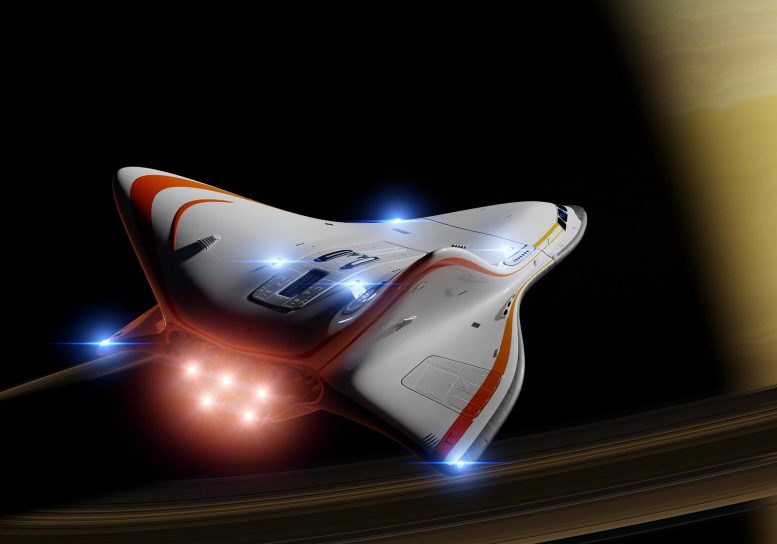
Darpa has enlisted Blue Origin, Lockheed Martin, and General Atomics to develop nuclear fission thermal rockets for lunar orbit.
The US Defense Advanced Research Projects Agency (Darpa) has recently commissioned three private companies, Blue Origin, Lockheed Martin and General Atomics, to develop nuclear fission thermal rockets for use in lunar orbit.
Such a development, if flown, could usher in a new era of spaceflight. That said, it is only one of several exciting avenues in rocket propulsion. Here are some others.
Chemical rockets
The standard means of propulsion for spacecraft uses chemical rockets. There are two main types: solid-fueled (such as the solid rocket boosters on the Space Shuttle), and liquid-fueled (such as the Saturn V).
In both cases, a chemical reaction is employed to produce a very hot, highly pressurized gas inside a combustion chamber. The engine nozzle provides the only outlet for this gas which consequently expands out of it, providing thrust.
The chemical reaction requires a fuel, such as liquid hydrogen or powdered aluminum, and an oxidizer (an agent that produces chemical reactions) such as oxygen. There are many other variables which ultimately also determine the efficiency of a rocket engine, and scientists and engineers are always looking to get more thrust and fuel efficiency out of a given design.
Recently, private company SpaceX has been conducting test flights of their Starship launcher prototype. This vehicle uses a “full-flow staged combustion (FFSC) engine,” the Raptor, which burns methane for fuel and oxygen for oxidizer. Such designs were tested by the Russians in the 1960s and the US government in the 2000s, but as yet none has flown in space. The engines are much more fuel-efficient and can generate a much higher thrust-to-weight ratio than traditional designs.
Fission thermal rockets
The nucleus of an atom consists of sub-atomic particles called protons and neutrons. These determine the mass of an element – the more protons and neutrons, the heavier it is. Some atomic nuclei are unstable and can be split into several smaller nuclei when bombarded with neutrons. This is the process of nuclear fission, and it can release an enormous amount of energy. As the nuclei decay, they also release more neutrons which go on to fissure more atoms – producing a chain reaction.
In a nuclear fission thermal rocket, a propellant gas, such as hydrogen, is heated by nuclear fission to high temperatures, creating a high-pressure gas within the reactor chamber. Like with chemical rockets, this can only escape via the rocket nozzle, again producing thrust. Nuclear fission rockets are not envisaged to produce the kind of thrust necessary to lift large payloads from the surface of the Earth into space. Once in space though, they are much more efficient than chemical rockets – for a given mass of propellant, they can accelerate a spacecraft to much higher speeds.
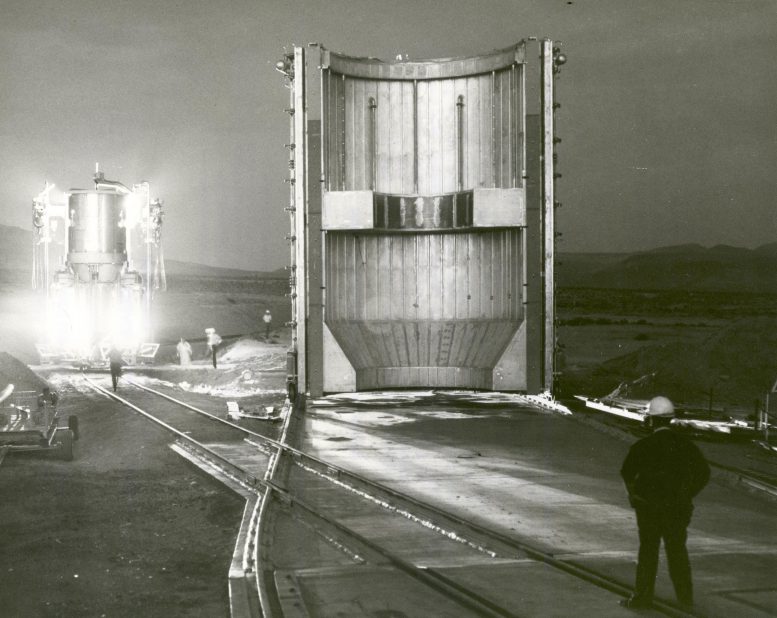
Nuclear rocket engine being transported to test stand in Jackass Flats, Nevada, in 1967. Credit: AEC-NASA
Nuclear fission rockets have never been flown in space, but they have been tested on the ground. They should be able to shorten flight times between Earth and Mars from some seven months to about three months for future crewed missions. Obvious drawbacks, however, include the production of radioactive waste, and the possibility of a launch failure which could result in radioactive material being spread over a wide area.
A major engineering challenge is to sufficiently miniaturise a reactor so that it will fit on a spacecraft. There is already a burgeoning industry in the production of compact fission reactors, including the development of a fission reactor which is smaller than an adult human.
Electric propulsion
A staple of science fiction, real ion drives generate charged particles (ionization), accelerate them using electric fields and then fire them from a thruster. The propellant is a gas such as xenon, a fairly heavy element that can be easily electrically charged.
As the charged xenon atoms accelerate out of the thruster, they transfer a very small amount of momentum (the product of mass and velocity) to the spacecraft, providing gentle thrust. While slow, ion drives are among the most fuel-efficient of all spacecraft propulsion methods, so could get us further. Ion drives are commonly used for attitude control (changing which direction a spacecraft is facing) and have been considered for deorbiting old satellites.
Current ion engines are powered by solar cells, effectively making them solar powered, and requiring very little propellant. They have been used on ESA’s SMART-1 mission to the Moon and Bepi-Colombo mission en-route to Mercury. NASA is currently developing a high-power electric propulsion system for the Lunar Gateway, an outpost that will orbit the Moon.
Solar sails
While propulsion usually requires propellant of some description, a more “green” method relying only on light from the Sun itself.
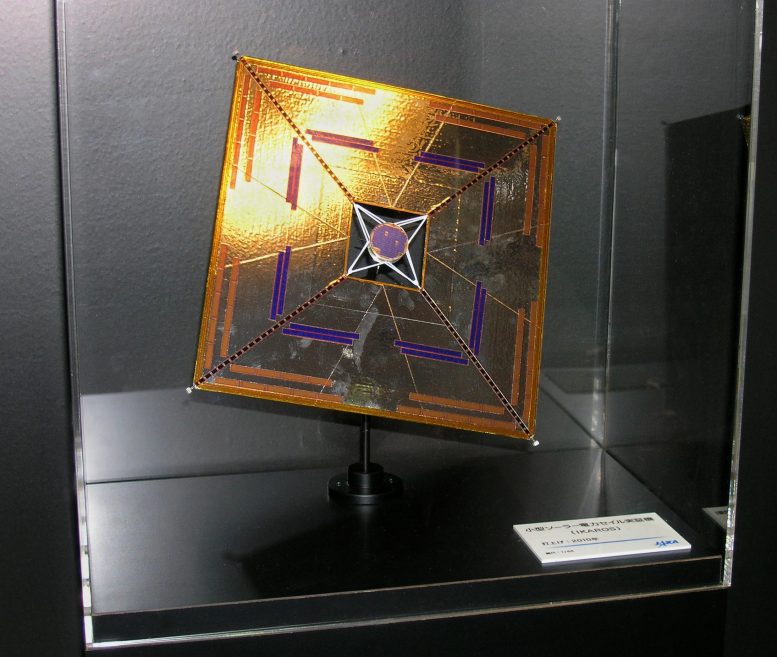
Ikaros solar sail. Credit: Pavel Hrdlička CC BY-SA
Sails rely on the physical property of conservation of momentum. On Earth, we are used to seeing this momentum as a dynamic pressure from air particles blowing into a sheet when sailing, propelling a vessel forwards. Light is comprised of photons, which have no mass, but they do have momentum and can transfer it to a sail. As the energies of individual photons are very small, an extremely large sail size is needed for any appreciable acceleration.
The speed gain will also depend on how far from the Sun you are. At Earth, the power received from sunlight is about 1.3 kW per square meter. If we had a sail the size of a football pitch, this would equate to 9.3 MW, providing a very low acceleration, even to a low mass object.
Solar sails have been tested by the Japanese IKAROS spacecraft which successfully flew by Venus, and the Planetary Society Lightsail-2, which is presently in orbit around Earth.
A way of improving efficiency and reducing sail size is to use a laser to propel the spacecraft forward. Lasers produce very intense beams of photons which can be directed onto a sail to provide much higher acceleration, but would require being built in Earth orbit to avoid loss of intensity in the atmosphere. Lasers have also been proposed as a means of de-orbiting space junk – the light from the laser can slow down a piece of orbital junk, which would then fall out of orbit and burn up in the atmosphere.
The development of nuclear fission rockets may excite some and concern others. However, as private companies and national space agencies are increasingly committing to a sustained human presence in space, these alternative means of propulsion will become more mainstream and have the potential to revolutionize our nascent space-faring civilization.
Written by:
- Gareth Dorrian – Post Doctoral Research Fellow in Space Science, University of Birmingham
- Ian Whittaker – Senior Lecturer in Physics, Nottingham Trent University
Adapted from an article originally published on The Conversation.![]()

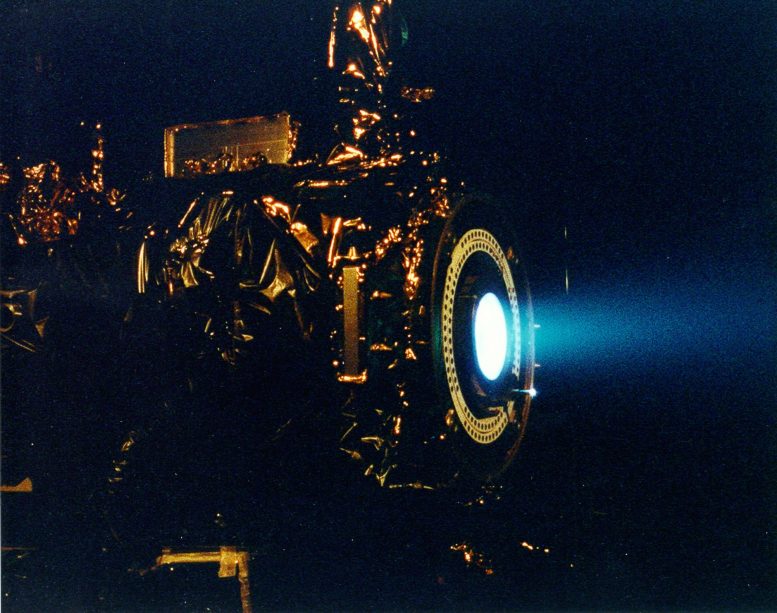


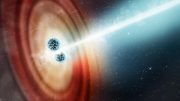

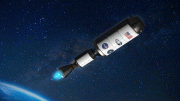



There’s also Ad Astra working on VASIMR as a electric/thermal bridge.
Has anyone asked themselves the long term of using nuclear rockets in space of the environmental problems that they will produce?
One knows there is waste from nuclear generating systems
But these scientists are all gung ho to want to use nuclear energy in space and start polluting space after they have been polluting our earth,
Just wait and see the fallout of these new systems. It won’t be pleasant when they cause deformities in living tissues.
Have they done a study to where they have not released any information about the future use of this energy
You can almost bet your bottom dollar there will be future consequences.
And who will they blame?
Just as these brain dead leaders of society want nuclear weapons to defend themselves for war
They are the ones who open their mouths first and lead society in the wrong direction, When they think they are going in the right direction.
They have never looked into the long term effects of their doings
But love to boast of their assumed scientific claims
I too wish they’d play w/ nuclear fire elsewhere: moon or mars.
I think Earth has seen enough of pointless nuclear testing. But who am I to decide for another?
Space is far more radioactive than anything humans could ever produce. Do some study and you might learn something.
What I mean is keep it out of the biosphere. Humans can be evil and stupid amd both. Its a safety precaution.
Hey David one very important nite to you. You cannot pollute outer space with nuclear waste or radiation. Outer space is by its very nature naturally full of all types of radiation all the way up to gamma rays. Outer space and radiation go hand in hand. You cannot gave one without the other. Outer space is shockingly full of radiation and has been so since the creation of the universe. Where did you get your info from? Tell me do you also believe that the Earth if flat?
Case study for safe nuclear-power: France. 90% of their entire grid.
Also, do you know anything about our sun’s radiation and the properties of the solar wind? If you did, you’d be A LOT more worried about that on a space trip beyond Earth than a miniscule reactor-powered spaceship. But all I’m hearing out of you is the hippie mantra: Nukes Bad. Solar Good.
Please stay home when humanity finally does reach the planets.
Thanks.
Great article.
I would add that the greatest benefit of nuclear energy for space propulsion is actually as a power source for an Ion drive.
Solar has a poor mass/power ratio and is limited to inner solar travel.
H2 storage is difficult long term so a nuclear thermal rocket would be difficult to manage.
Whereas xenon is a by-product of nuclear fission, and very easy to store.
To David Churra:
Nuclear kills the least, and pollutes the least per Megawatt hour than any other energy source. STOP THE CAP, DO THE WORK.
Fission rockets are interesting but not new. Written about in the sixties and actually tested in the seventies. The NERV project was shelved due to the knee jerk anti all things nuclear reaction from hippies and greens. Will there be another outcome this time around?
The availability of fuel in the form of He3 from the lunar surface would make this type of propulsion cost efficient.
I look forward to the advancement of mankind in space.
Solar sails are analogous to wind sails.
But how to make a lightplane, analoglus to airplane?
Solar sails only repell light. But how to suckin light and expell it out? Not sure its possible except in imagination.
What kind of an engine can attract light and repel light? And to break, inverse the process.
That would be a black hole. You need something with enough gravitational force to pull light in and control it’s properties to expel the light to generate a momentum force.
Only problem with that is the source of a black hole is from a dying star; which is impossible to harvest with our current tech.
And if we generated something that worked similar to a black hole, that was small enough to try and contain, it would still need enough force to pull light in and with that type of gravitational force it would self destruct the equipment used to control and contain it. Who knows what other catastrophic events would occur due to the creation of this, as it’s very likely it would create a self destructive event on earth; since black holes by nature have extremely destructive gravitational properties that destroy nearby stars, planets, light, etc.
“A black hole is a region of spacetime where gravity is so strong that nothing—no particles or even electromagnetic radiation such as light—can escape from it. The theory of general relativity predicts that a sufficiently compact mass can deform spacetime to form a black hole.”
Black hole is a void in space. A void/vacuum. A light vacuum.
You thinking weapons, it seems or coming from that perspective.
I’m not sure if its possible, but maybe the Al-Cubierrie drive surfs on a self-created absolute zero void/vacuum.
We don’t have to start out at light speed. We can work our way up to it maybe even beyond it. Slow consistent progression over a period of time.
So maybe some kind of a positive feedback system?
Say we capture energy from the star we are aiming to visit. We have it in our sights, locked in. Then we build momentum with the energy we have as we travel towards it. In the process of traveling batteries get charges with new energy which we expell again. And again. And again. You’ve not going to technically slow down in space, unless some object gets in the way or gravity pulls one way or another. Thus the repetetive process of capturing and expelling energy should in theory make our ship speed up, right?
Maybe laser propulsion?
Is it possible to use light as propellant in space? (Maybe thats what the light sail + laser does?
I was hoping for something sleaker.
Is an anti-laser possible?
We still have to worry about navigation, thus speed, velocity & acceleration control.
Why wouldn’t it be possible to build up to light speed if safe to do so?
Blackhole in space?
Does not compute. System error.
Blackhole:White Lie::Whitehole:Black Lie.
Sorry
T.Townsend Brown got a patent for an electro-gravitic device in 1965. He built and tested working models in his shop. They use electricity to charge the vehicle surface at approximately 30,000 volts to 1M volts or more with no exhaust to produce thrust and the top speed seems to be very high and will operate in air or vacuum. This is not the ionization principle.
I thought of electrifying a ship on the outside to make it slip thru space too kind of like turning a motor inside out. I can’t recall how or why but it was related to the Al-Cubierrie drive.
There is also Reaction Engines Skylon spaceplane with its SABRE engines
Let’s just keep spending more and more of taxpayers money on crap that doesn’t matter. Keep on jacking up the taxes while people are barely making ends meat so we can concentrate on spaceflight. What a joke
We need to stop messing around and build a reactor
that bends space in front of the ship to shorten distance.
The shortest way forward is not a straight line unless it’s bent. Ask Bob Lazar
We need to stop messing around and build a reactor
that bends space in front of the ship to shorten distance.
The shortest way forward is not a straight line unless it’s bent. Ask Bob Lazar
I think we should first go to Mars & Venus (or moon) and see what these ‘gods’ have to say about it all.
Confirm by triangulation?
I love that the first comment is “How irresponsible to even consider nuclear, think of the planet”! Stupid brain-dead people!”, and it’s followed up by “nuclear is so great, only it was killed off by the hippies!”.
David, space is essentially un-pollutable from nuclear waste on timescales large enough for humanity to go extinct. The sheer size of interplanetary space is so vast that if you took all the nuclear material on Earth (including that in the core of the planet among the iron), reacted it all and dispersed the waste between earth and mars’ orbits, you’d STILL be getting more radiation exposure from solar radiation.
Plus, these types of drives are being considered for even further missions.
As far as accidents in launch and in the atmosphere, while it’s true that we don’t want uranium or plutonium-laden capsules exploding in the atmosphere or on the surface, those explosions don’t cause a runaway nuclear reaction, so the REAL bad fallout isn’t produced, it’s still unreacted nuclear fuel. The reaction engine is only used in space, which the article does specify.
Take another look at the technology and maybe you’ll come you understand it’s not so scary after all.
I agree nuclear technology is not necessarily scary. (Creating a ‘blackhole’ seems scarier.)
Rather people of ill will made themselves and the tech scary and it has tainted the tech; the fact that it was used as a WMD and terror before a fuel source.
I guess every organism has its own personal fears, levels of fear and reasons for fear.
It just seems like humans/Life/planet is on a path of destruction. Its not civil to use Sci & Tech to produce weapons for venegence (war) and terror first before civil use. I guess security comes first. But how about some trust & hope in the whole biosphere and Sun? Mankind even has a balancing compliment (or is for) womankind.
We’ve been destroying ourselves and our home because of our own hurried mistakes.
Stop being a libtard. Space exploration is important. Nuclear power is the cleanest and most efficient source of all power. I read an article recently, if you took all the waste from all the Nuclear power plants from all time it wouldn’t fill a garbage can. I’m sure they would build some sort of protective containment. Comments that Libtards make are the reason California has no water or power. Use your brain for once.
Sounds like revenge politics.
Pretty sure youre wrong about size amount of nuclear waste.
Trust is expensive bro.
You might be right about the waste, if we extracted all the energy out of it. Actually, then there wouldn’t be any waste since its all broken down to stable(r) elements. So you are right. If we sucked every drop of radiation out of it.
As to revenge politics (aka war) it seems I’m guilty of it.
Still though trust is expensive. (Once burned thrice learned). And i say in the end we each do it to our selves. So I am in the wrong. My lack of trust is my own fault. Lack of self-trust.
I apollogize; sorry.
You just gave me an idea for space propulsion:
Total breakdown of heavy elements into the smallest unit possible: energy I guess.
(Is matter extremely compacted energy?)
If we break a uranium atom totally apart so that nothing is left of it; that should give off a lot of energy, maybe equal to the pressure/force it took to produce it.
But how to extract every energy packet from of it.
https://youtu.be/JF2qCydu7Hk
#5 says 90% of potential energy remains. That mean even if we used 100% of potential, we still (in theory) could break it totally apart and turn it all into kinetic.
So maybe destruction of matter has its uses.
I feel ‘converted’.
But I like order and prefer to build, concentrate, densify etc. Now back to my normal. 🌞
All that money should be spent on more quantom tech, and long term sustainability of artificial agriculture biomes research. That will be useful for planetary socio-economic development, material science, exploration, and colonization.
Each & every organism has its own specialty.🌞
You cannot pollute outer space with nuclear waste or radiation. Space by its very nature is naturally full of all types of radiation even gamma rays and has been so since its creation. This is physics 101. Have you ever taken a science or physics class?
Nuclear thermal is suitable to high thrust. They developed it under the label Dumbo same time as nerva but buried it by limiting the thrust to that of nerva. The high thrust version could not operate at such low power. There is a write-up in a 1975 Analog article on nuclear rockets by Donald Kingsbury who worked on it. Report is hard to find but is stored a few places.
BS distraction tactics. This is horse and buggy compared to what already exists. All wasted time and money, cover’s for money skimming trillions since the 80s, but everyone knows that. Think layers of electromagnetic energy, sonic frequency, certain shapes temperature,centrifugal motion, mercury, helium3 and alternating extremely voltage , housed and sequenced properly.
Your articles are great! good job ministry of science and technology of China!
Seems to me there is an obvious application here. A modified Starship to use Nuclear engines, that sits in orbit and travels to Mars and back. The orbital gymnastics being done by much safer Methane Raptors.
I could easily see the standard of future space travel implimenting solar sails, ion engines, and nuclear fission in various and meaningful ways. A craft applying these three means of propulsion simultaneously would be incredible.
What about a radiant energy rocket… Using longitudinal aether perturbation…
Monkeys
Quick! Hide the antigrav craft the tele-portals and the underground mountain city & tunnel records! The media & public found us!
I think the china ministry of science and technology will make a base on Mars and the moon before the US.
It seems that the Pros/ Cons of each system will sort each type into its own optimal use. Each step in the process of sending a vehicle to a celestial location has different needs and should use the best system for the task.
If they are worried about fissile material being detonated in Earth’s atmosphere there are numerous ways of making it fail safe, a purpose built space craft to ferry the material to orbit isn’t difficult to build, just expensive. Use a Saturn rocket to carry only the fissile material to a shipyard in orbit and the Saturn’s payload is the material and a way of protecting the material would work.
We as humans needs to spread out, this world is isn’t big enough now nevermind in ten years when some of this tech is viable.
Last thing, Lockheed-Martin already has a nuclear reactor powered aircraft. The on-board reactor charges battery packs for the electric propulsion engines. It looks like most other jumbo jets and has a maximum flight time limited by the amount of resources humans need to survive (e.g.- food, water, volume of waste tanks). So don’t think this is all science fiction. I know someone will ask this, “Then why aren’t they using it?” Well, Lockheed- Martin did focus groups and found too many people are afraid of flying in an electric-only aircraft to make sales feasible. This came out just after the 787 Dreamliner had an electric catastrophic failure.
They have found the spice!
Let’s just ask ourselves why? Out of all things we can accomplish. The one major goal is to get to Mars? I would just say people should really keep a close eye on these billionaires. They aren’t Saints regardless of what you might think. And would squash you like a cockroach at any given moment. There is a reason why
What is it here that people just don’t quite understand? Space exploration for humanity is an illusion. Nothing more than a big dream and imagination gone wild.
It’ll never happen for humans.
We sent men to the Moon and pushed satellites through space to observe and gather data from the planets.
Indeed, we have even sent state of the art high-tech probes to Mars, but it all ends there.
Every single square inch of space is completely uninhabitable to human organisms and every other organism for that matter.
The amount of radiation in any given square inch of space is completely unbearable and would destroy anything living immediately.
Of course, we don’t measure the universe in square inches. Not even square kilometres. Besides, “square” does not apply to he universe in the first place.
Instead, we measure it in light years. That’s a vast amount of area and every single square inch to this date that has been observed before is completely inhospitable to all life forms. Space travel will be deadly and dangerous and impossible.
Star Trek is nothing but a TV show and Star Wars is nothing more than imagination.
It is very common to confuse our current space exploration capacity with the explorational implications and capabilities of something out of Star Trek or Star Wars.
The chances of having a serious problem occur during any planetary mission is more than highly likely. It’s pretty much guaranteed. Catastrophic failure to any vessel that we send to Mars is a certainty.
Don’t think so? Do yourself and everybody else a favor and log out of this website and go and do some basic research. It won’t take much to figure this out.
But nevermind that. This huge problem is miniscule in comparison to the real major problems the humanity faces with space exploration of the planets and other areas off the cosmos as a whole.
How are you going to solve this major problem: All the material needed to build basic infrastructure on Mars.
That’s going to take a lot of separate missions. From Earth to Mars and Mars back to Earth. Repeat. Repeat again. Flawlessly.
Really?
If even one mission fails, billions of dollars immediately get funneled into the garbage can; any mission will be pushed back by years and years and years.
Now take a look at the current affairs on this planet. Nevermind the socio-political ticking time-bomb between China and America and Russia and the Middle East.
That alone will hinder the progress of space exploration.
But let’s take a look at the physical material conundrum that nobody seems to acknowledge.
Physical material meaning that in which infrastructure will be built on mars or any other planet that humans think they’re going to colonize.
In order to build even the most basic infrastructure, the crust of the earth will need to be grinded down much further than the current mining and extraction development projects that already exist.
Much, much further.
The swiss cheese that pretty much describes our already over-mined, heavily extracted planet from just basic mining practices alone, will take extreme levels of materials mining to the likes of which we’ve never seen before.
The Mars endeavor is going to take an immense amount of material to build just basic infrastructure. Where does humanity think its going to get this material from?
Might as well start doubling or even tripling the amount of fossil fuel extraction and other important raw mineral development along with deforestation if you want to terraform Mars because that’s what it’s going to take.
Cuz you know, we need to take a lot of cargo in the form of payloads to Mars, right?
Keep dreaming. Space exploration for humanity is an absolute illusion.
Besides how does it make sense to completely destroy the beautiful planet we call Earth in the form of severe climate change and other man-made catastrophes . . . And go and colonize mars or Venus to live there instead?
What a joke that is. Start putting all this money towards saving the planet instead of dreaming of Mars or Moon okay?
That’s a lot of money being wasted on nothing more than a childish dream that will never develop into any sort of space exploration industry.
Please.
Put all of this money back towards the only planet that is hospitable for life in the known universe. You know the one.
The one that were destroying.
But that’ll never happen. So hey, whatever. Have fun on Mars in the meantime, keep dreaming . . .
Is it possible with constant acceleration to reach the speed of light (or faster) in space?
I meant velocity. But acceleration would be faster.
No I meant acceleration.
Doesn’t constant thrust produce constant acceleration in space, as there is no friction? I think so.